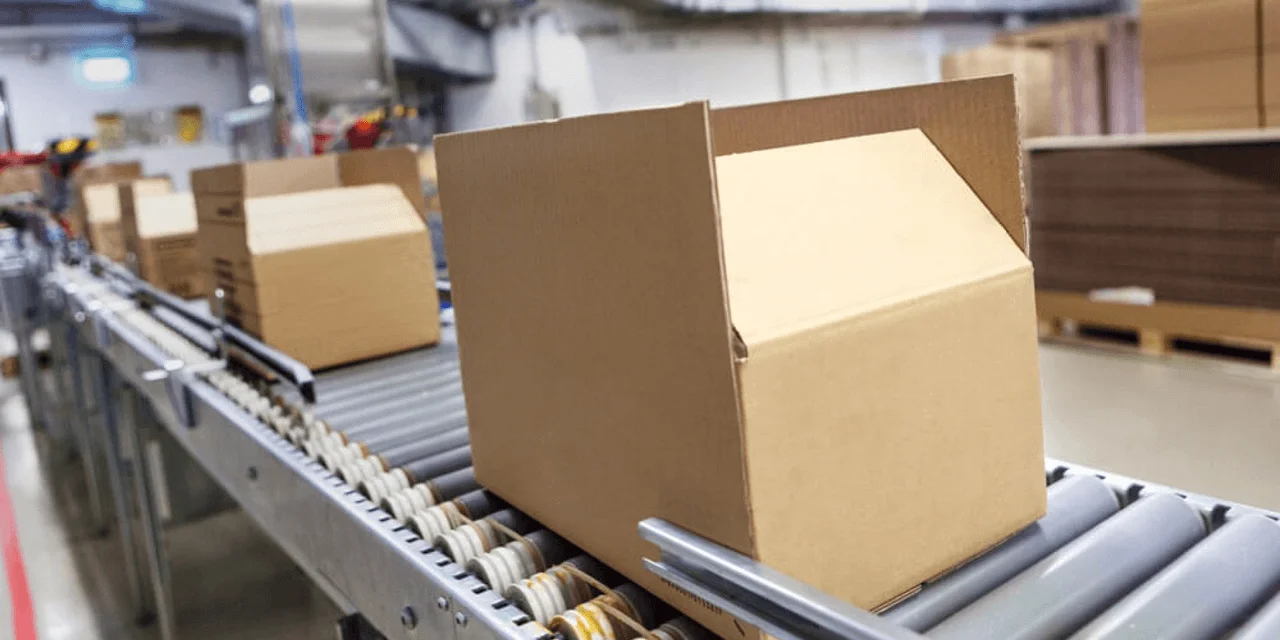Logistics plays a strategically vital role in your company.
And its influence is considerable, for it directly affects your company’s business, sales and expansion.
It’s essential, therefore, that you can manage your logistics in a manner that ensures the survival of your company - and all the more so in this era of globalization and rampant e-commerce.
In this article, you’ll find out what logistics is, the challenges it has to address, how it works.
Logistics: a simple definition
Logistics is the activity which addresses the management, control and optimization of all flows of materials in an enterprise. It therefore draws on input from various sectors and specializations, including logistics transportation, warehousing, production, and innovation research.
Logistics can be managed either internally, within the company, or outsourced to a specialist operator.
Logistics is not a new field, but it has greatly expanded in recent years, notably to meet new consumer needs (fast delivery times, frequent renewal of product ranges, the need for increased transparency etc.).
Depending on the sector, there are different types of logistics. For example:
- Retail logistics;
- Cosmetics logistics;
- Textile logistics etc.
Logistics is more than a practical or necessary means of managing your business: it can deliver a real competitive advantage. For example, it allows you to:
- Have the right resources at your disposal at the right time, avoiding stock shortages or unnecessary surpluses;
- Coordinate services to increase productivity, responsiveness and efficiency
- Increase customer satisfaction by providing the highest quality of service
- Reduce delays in the retrieval and transport of goods;
- Control and reduce costs.
All of these elements combined make logistics a formidable weapon for establishing your enterprise, developing its business and increasing its business volume. Although it requires investment at the outset, well-managed logistics offers obvious benefits.

What challenges does logistics address?
Logistics offers an effective response to commercial and competitive pressures, as well as consumer demands. It makes it possible to reconcile these new demands with the need to control the additional costs entailed. Logistics therefore pursues ever more efficiency at the best price.
The challenges addressed by logistics are many. They are usually classified across 3 time scales:
- Short term;
- Medium term;
- Long term.
Short-term logistics issues
In the short term, logistics can optimize workflows by:
- Improving responsiveness by using short-term business forecasts as well as purchase orders to determine needs;
- Scheduling restocking, production and delivery;
- Improved after-sales service, for example by distributing spare parts in advance;
- Maintenance plans to ensure continuity of operation.
Thanks to these improvements, the whole supply chain is better prepared and therefore more efficient. Enterprises can anticipate, adapt and respond quickly, for example, when a product is moving so quickly that stock shortages look likely, or when early consumer feedback points to a technical problem with a product.
Foresight is the key to success!
In the medium-term perspective, logistics plays a major role in managing budgets
In the medium term, logistics plays a major role in forecasting and the preparation of action plans and budgets:
- Implementing action plans to better control logistics costs for specific services;
- Decision-making support: determining which services need to be outsourced to optimize the supply chain and control costs;
- Maximizing investments and managing your company’s working capital.
Logistics gives companies a better overview of their business, so they know where to take action first while remaining on budget.
Logistical challenges in the long-term: expanding your business
In the long term, logistics plays an equally essential role for your company:
- It allows you to improve your organization and management of multiple services, service providers and suppliers: simplifying processes to reduce processing times.
- It provides a real-time overview of the impact of your logistics operations in terms of the organizational costs for you and operating costs for your customers.
- It offers s significant competitive advantage by ensuring the best possible quality of service at a reasonable cost.
Whether we look at it from the short, medium or long term perspective, therefore, logistics helps your business run more smoothly - and also to grow.
That is why logistics is in a state of constant flux. Enterprises not only want to improve the management of their logistic flows at time T, but to improve it constantly so they can increase their profits.

Logistics: how does it work?
Logistics comprises many different activities throughout the production process. It draws on the support of many innovative tools which provide e.g. true track and trace or a clear vision of stocks in real time.
Upstream of the production process
Logistics is often necessary even before production starts. Examples of logistics before production include:
1. Development and sourcing of supplies:
This may involve finding reliable suppliers or subcontractors, either internally or externally, who are capable of meeting the company’s demands in terms of quality and quantity within a satisfactory time frame. It also involves seeking partners such as carriers.
2. Purchasing
This step covers the entire buying and negotiation process. It may also involve real-time price monitoring to foresee fluctuations and improve budget control.
3. Restocking
Everything that involves purchase orders and deliveries to replenish the supply chain.
4. Movement of goods
The route followed by goods from their purchase from a supplier to their arrival at a storage point or order picking zone. This may also involve customs operations if goods are transiting between countries.
Logistics makes it easier to organize and anticipate your business activity. It also makes it possible to work to the just-in-time model, allowing you to optimize production and reduce dormant stock.
Downstream of the production process
Logistics also covers many downstream activities, including:
1. Storage in a warehouse or distribution centre
Where to store the goods and under what conditions, how to organize stocks to increase the productivity of employees etc.
2. Packaging
Packaging, addressing, wrapping, assembly of kits or batches etc. Depending on the nature of your business, this step may require products to be shipped “as is” or to be personalized in various ways.
3. Order picking
In the pharmaceutical sector, the preferred term is dispatching (including storage and downstream transport), while the food sector refers to distribution: when the goods arrive at the dock, they are not placed in storage but instead are immediately reloaded and onward-processed to the end recipients.
Transportation of goods to the final destination
Another term for this is downstream transport. This stage comprises a sequence of tasks: carriage, docking, then distribution. The goods thus pass through several stages during the transportation process, from their arrival at the storage point to their reception by the end recipient.
Each of these stages plays an important role and can be optimized within the supply chain to increase efficiency, productivity and speed: all of which help control your budget and save money while providing superior quality of service.

Reverse logistics
Logistics don’t even stop when the goods are shipped to their end recipient! Additional steps - and therefore additional work - may be required.
Reverse logistics typically designates the transportation of goods from the end customer to:
1. A recycling point
If the goods can be recycled, then their transportation, recycling and the management of the resulting material must be organized.
2. A point of final disposal
For end-of-life goods that cannot be recycled. These goods must be destroyed, and the resulting waste disposed of, in accordance with the regulations.
3. A repair point
Goods that can be repaired may be sent to a repair centre. This involves the organization of transport and the management of spare parts. Where repair is not possible, arrangements for the replacement of the item in question, and for the management of the end-of-life product (recycling or destruction), must be made.
Returns is an issue whose ramifications extend well beyond logistics, but they also represent a thriving market:
- As a way to obtain raw materials that sometimes become hard to find;
- As a source of employment.
Returns management involves additional costs and also has an impact on the environment. That’s why some countries, including France, have introduced penalty schemes to encourage businesses and consumers to “play the game” - not just in terms of taking responsibility, but financial contributions too.
Take for example the eco-tax or eco-contribution introduced on certain products including household appliances. This charge is collected directly in the purchase price of the product, and the vendor then passes it on to the State.
Logistics lets you manage a large number of processes, from the search for raw materials to the delivery of goods to an end customer - and sometimes the return of the product for repair, recycling or destruction. In logistics, each activity intermeshes with the other links in the supply chain.
This is why well-managed logistics ensures higher productivity, efficiency and profits: all factors which are essential if your enterprise is to expand its sales and stand up to the competition.



Laisser nous votre commentaire